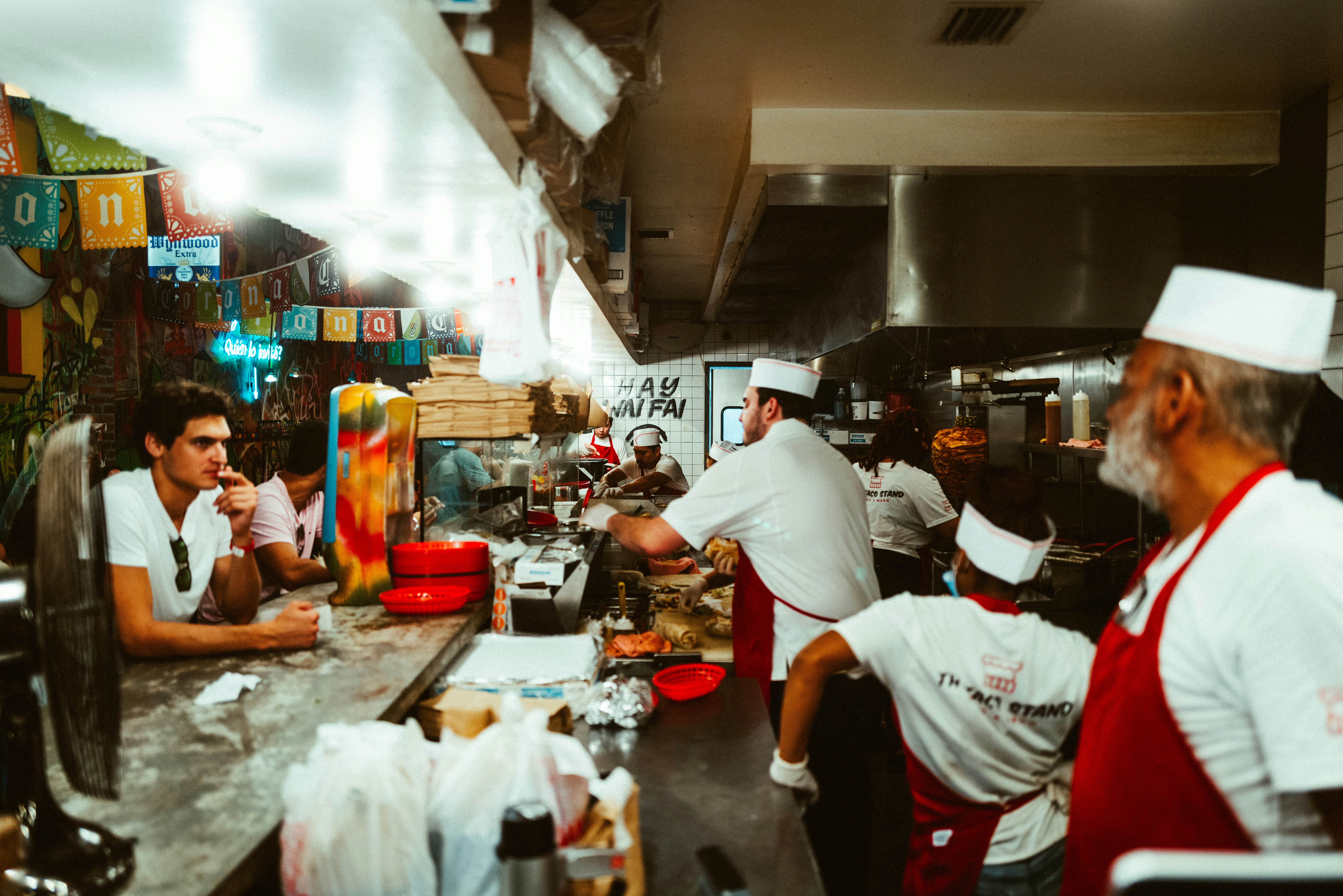Managing your inventory can seem like a hefty task – juggling product quantities, expiration dates, waste, and demand can seem a little daunting. But, with the right strategy, you can streamline your restaurant inventory management to minimise loss and stock up just right.
In this guide we’ll cover:
- What is restaurant inventory management?
- How do restaurants manage inventory?
- Why restaurant inventory management matters
- Challenges in managing restaurant inventory
- Advantages of effective restaurant inventory management
- Choosing the best restaurant inventory management software
- How Dojo can help
- FAQs
The backbone of your kitchen: What is restaurant inventory management?
Restaurant inventory management is all about keeping track of stock – whether it’s fresh ingredients, beverages, or kitchen supplies. The goal is to ensure there’s enough to meet demand without overordering or letting too much go to waste.
When done well, it helps reduce waste, keeps costs in check, and makes daily operations run more smoothly. Tools like restaurant inventory management software and food and beverage inventory management software simplify the process, offering easier control and more detailed insights.
Best practices: How do restaurants manage inventory?
Here’s a quick breakdown of how to manage inventory in a restaurant:
- set ideal minimum and maximum stock levels (also known as PAR level) to avoid overstocking or running out of key ingredients
- use First in, First out (FIFO) to make sure older items are used first and waste is kept to a minimum
- track inventory regularly using manual counts or restaurant inventory management software to get accurate insights
- adjust orders based on sales data to ensure you’re buying the right quantities
- do regular stock checks to catch discrepancies and keep inventory accurate
- work with suppliers to schedule timely deliveries and keep a steady supply of fresh ingredients.
A restaurant inventory app can simplify the daily logging and tracking for managers. Larger enterprises can benefit from a restaurant stock management system that aligns inventory with sales and ordering schedules. Even basic tools, like a restaurant inventory sheet, can support day-to-day tracking.
Real-life example: Inventory management in a full-service restaurant
Imagine a busy Italian full-service restaurant known for its fresh pasta and wood-fired Margherita pizzas. The restaurant manager keeps a close eye on key ingredients like flour, tomatoes, and mozzarella, setting PAR levels based on daily usage and delivery schedules.
For instance, they stock 50kg of flour, 30kg of tomatoes, and 20kg of mozzarella to make sure there’s enough for their most popular dishes.
To minimise waste, they use the FIFO method, making sure older stock, like tomatoes nearing their best-before date, is used first. After reviewing sales, they find they sell around 100 Margherita pizzas a day, so they adjust orders to receive 20kg of mozzarella and tomatoes three times a week.
With the help of inventory software for restaurants, they track stock in real-time, avoid shortages, and make reordering more efficient – all while keeping costs down and ingredients fresh.
The secret sauce: Why restaurant inventory management matters
Good restaurant order management systems help in several ways:
- boost profitability by controlling costs and boosting margins
- prevent overordering and support smarter purchasing decisions
- streamline operations to ease the workload on kitchen staff
- ensure consistency in dishes to build customer loyalty and encourage repeat visits
- go beyond stock tracking with smarter, more efficient restaurant management solutions.
Behind the bottlenecks: Challenges in managing restaurant inventory
Over-ordering and spoilage: Without the right tools, excess stock can pile up, leading to waste and profit loss. Investing in a restaurant inventory system can help monitor stock levels and prevent over-purchasing.
Staff errors and theft: Manual tracking, like a restaurant inventory sheet, can leave room for mistakes.
Ineffective portion control: Inconsistent serving sizes not only waste ingredients but also increase costs. Using food inventory management tools helps track usage and standardise portions.
Limited visibility into inventory: Without real-time data, it’s difficult to know what’s on hand and what’s needed. Restaurant inventory management software offers real-time tracking and detailed reports, helping businesses respond to demand and avoid shortages.
Inefficient tech: When inventory systems aren’t integrated into sales or ordering, it creates frustrating delays. Staff waste time juggling spreadsheets or reconciling data, making it harder to reorder quickly or spot trends.
The best restaurant inventory management software streamlines everything, linking inventory to sales for more responsive decision-making.
Tech to the rescue: The role of technology in inventory management
Technology is changing the game for restaurant inventory management. Manual tracking takes too much time and often leads to errors, while restaurant inventory management software automates tasks like tracking, reordering, and reporting.
For even more efficiency, restaurant POS inventory management links sales to stock in real-time, so every transaction updates your inventory with ease. Smaller businesses often opt for a specialised restaurant inventory app for mobile tracking.
Our integrated payments connect your card machine with over 600 EPOS systems, streamlining transactions, reducing errors, and saving time.
Plus, with Dojo Bookings, you can manage reservations alongside inventory, keeping everything running smoothly with features like Pay at Table, your staff can settle bills instantly.
Winning with efficiency: Advantages of effective inventory management
- Reduced costs: By preventing overordering and minimising waste, you can cut unnecessary expenses and make the most of your stock.
- Better cash flow: Keeping inventory levels just right frees up cash for other areas of the business, from marketing to equipment upgrades.
- Increased profits: With lower costs and better control, profits naturally improve, helping the business stay competitive and sustainable.
- Stronger vendor relationships: Consistently ordering the right quantities and paying on time builds trust with suppliers, which can lead to better deals and more reliable service.
Fit-finder: Choosing the best restaurant inventory management software
Key features
- User-friendliness: A system that’s easy to learn and use will save your team time and effort.
- Real-time tracking: Instant updates on stock levels help you stay responsive to demand.
- Scalability: Make sure the system can grow with your business.
- POS integration: Linking inventory to sales ensures automated and accurate stock updates.
Cloud-based vs in-house
- Cloud-based systems are perfect for food inventory management in enterprises or multi-location restaurants. They offer flexibility and remote access, making it easy to track stock, place orders, and generate reports from anywhere.
For fast-paced operations, they integrate seamlessly with a restaurant POS inventory management system, ensuring real-time updates.
- In-house systems work well for smaller cafes, bars, or single-location restaurants. These systems are installed on-site and don’t rely on internet connectivity, making them a reliable choice for areas with inconsistent connections.
Did you know that our payments come with 99.99% uptime? Enjoy the peace of mind and focus on the big stuff.
Aligning with your restaurant
To make the most of your restaurant stock management system, make sure it aligns with your restaurant’s size, type, and service model.
- A full-service restaurant with high-volume operations will benefit from a feature-rich food inventory management solution. Systems with advanced tools like POS integration and real-time tracking help keep things running smoothly while cutting down on waste.
- A cafe or bar might prefer a simpler, cost-effective option that meets basic inventory needs without overcomplicating processes.
How Dojo can help
Nailing inventory management is a big win for any restaurant – but it’s only part of the story. At Dojo, we’re all about making life easier, whether it’s keeping stock in check or speeding up payments at the till with the right restaurant order management system.
Our card machines don’t just process payments – they work seamlessly with your tech stack, linking sales to your inventory system so you can stay in control and keep operations running smoothly.
Looking to take it further? Explore how Dojo empowers full-service and quick-service restaurants with our powerful payment suite. We’ve also got plenty of tips and tricks you can find on our blog, from advice on cash flow to achieving operational efficiency – get the latest business guidance today.



